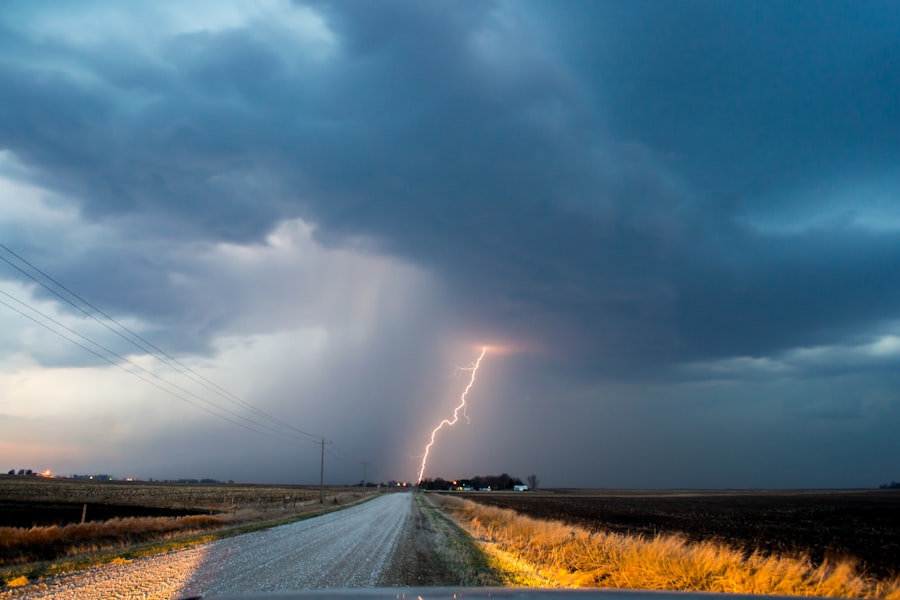Togo, a small West African nation, is characterised by a diverse range of climate zones that contribute to its rich biodiversity and agricultural potential. Stretching from the Atlantic coast in the south to the northern savannah regions, Togo‘s climate is influenced by its geographical position, topography, and the seasonal movements of the Intertropical Convergence Zone (ITCZ). This convergence zone plays a pivotal role in determining the rainfall patterns and temperature variations across the country.
As a result, Togo experiences a variety of climatic conditions that range from humid tropical climates to semi-arid zones, each supporting distinct ecosystems and livelihoods. The climate of Togo can be broadly categorised into five main zones: coastal, savannah, mountain, semi-arid, and tropical rainforest. Each of these zones presents unique characteristics that not only shape the environment but also influence the socio-economic activities of the local populations.
Understanding these climate zones is essential for appreciating Togo’s ecological diversity and the challenges posed by climate change. The interplay between these climatic conditions and human activities has significant implications for agriculture, wildlife conservation, and overall sustainability in the region.
Summary
- Togo’s climate zones range from coastal to semi-arid, each with its own unique characteristics and impact on the environment.
- The coastal climate in Togo offers a tropical paradise with warm temperatures, high humidity, and lush vegetation, making it a popular tourist destination.
- Togo’s savannah climate is characterized by vast grasslands and a distinct dry season, providing a unique landscape for exploration and wildlife observation.
- The mountain climate in Togo brings cooler temperatures and higher rainfall, creating a refreshing escape from the heat of the lowlands.
- Togo’s semi-arid climate in the north experiences low rainfall and high temperatures, posing challenges for agriculture and wildlife survival.
Coastal Climate: A Tropical Paradise
Seasonal Variations
This area experiences two distinct seasons: a wet season from April to October and a dry season from November to March. The proximity to the Atlantic Ocean moderates temperatures, ensuring that they remain relatively stable, with average highs around 30°C (86°F) and lows rarely dipping below 20°C (68°F).
A Vibrant Ecosystem
The coastal climate is conducive to the growth of diverse flora and fauna, making it a vibrant ecosystem. The wet season brings heavy rainfall, often exceeding 1,500 millimetres annually, which supports lush vegetation and contributes to the fertility of the soil. This abundance of moisture allows for the cultivation of various crops such as cassava, yams, and maize, which are staples in the local diet.
A Thriving Fishing Industry
Additionally, the coastal climate fosters a thriving fishing industry, as the warm waters are home to numerous fish species. The beaches along Togo’s coastline are not only popular tourist destinations but also serve as vital resources for local communities that rely on fishing for their livelihoods.
Savannah Climate: Exploring Togo’s Grasslands

Moving inland from the coastal region, Togo transitions into a savannah climate characterised by distinct wet and dry seasons. The wet season typically lasts from May to October, while the dry season extends from November to April. This climate zone is marked by higher temperature variations compared to the coastal areas, with daytime temperatures often soaring above 35°C (95°F) during the dry months.
The savannah landscape is dominated by grasses interspersed with scattered trees, creating an ecosystem that supports a variety of wildlife. The savannah climate plays a crucial role in shaping agricultural practices in this region. Farmers often engage in subsistence agriculture, cultivating crops such as millet, sorghum, and groundnuts that are well-suited to the drier conditions.
Livestock rearing is also prevalent, with cattle, goats, and sheep being common among pastoral communities. The seasonal rains rejuvenate the grasslands, providing ample grazing opportunities for livestock during the wet months.
Mountain Climate: The Cooler Side of Togo
| Climate Metric | Measurement |
|---|---|
| Average Temperature | 15°C – 25°C |
| Rainfall | 1200mm – 1800mm annually |
| Humidity | 60% – 80% |
| Altitude | Average 600 meters above sea level |
In stark contrast to the coastal and savannah climates, Togo’s mountainous regions experience a cooler climate due to their elevation. The Togo Mountains, which run through the central part of the country, create microclimates that vary significantly from the surrounding lowlands. Temperatures in these areas can drop to around 15°C (59°F) at night, particularly during the dry season.
The mountainous terrain also influences precipitation patterns, with higher altitudes receiving more rainfall than lower regions. The cooler temperatures and increased rainfall support a unique ecosystem that includes montane forests and diverse plant species. This climate zone is particularly favourable for growing crops such as coffee and cocoa, which thrive in cooler conditions.
The mountainous regions are also home to several indigenous communities that have adapted their agricultural practices to suit the local environment. These communities often engage in agroforestry, integrating tree planting with crop cultivation to enhance soil fertility and biodiversity.
Semi-arid Climate: Togo’s Dry Regions
In northern Togo, the climate shifts towards a semi-arid zone characterised by lower rainfall and higher temperatures. This region experiences a shorter wet season compared to other parts of the country, typically lasting from June to September, while the dry season can extend for several months. Average annual rainfall in this area can be as low as 600 millimetres, making it challenging for agriculture and water resource management.
The semi-arid climate significantly influences land use patterns in northern Togo. Farmers often rely on drought-resistant crops such as millet and sorghum that can withstand prolonged dry spells. Additionally, traditional practices such as shifting cultivation are common as communities adapt to the variable climatic conditions.
Water scarcity is a pressing issue in this region; therefore, rainwater harvesting and other water conservation techniques are increasingly being adopted to improve resilience against droughts.
Tropical Rainforest Climate: Togo’s Lush Greenery

Climate and Biodiversity
This region receives an average annual rainfall of over 2,000 millimetres, creating an environment rich in biodiversity. The temperature remains relatively stable year-round, typically ranging between 24°C (75°F) and 30°C (86°F).
Ecosystem and Cultural Significance
The lush greenery of Togo’s rainforest supports an array of plant and animal species, many of which are endemic to this region. The dense canopy provides habitat for various birds, mammals, and insects, contributing to a complex ecosystem that plays a vital role in maintaining ecological balance. The rainforest also holds significant cultural importance for local communities who rely on its resources for food, medicine, and materials for shelter.
Sustainable Management
Sustainable practices such as agroforestry are being promoted to ensure that these resources are managed responsibly while supporting local livelihoods.
Impact of Climate on Togo’s Wildlife and Agriculture
The diverse climate zones of Togo have profound implications for its wildlife and agricultural practices. Each climatic region supports distinct ecosystems that are home to various species adapted to specific environmental conditions. For instance, the coastal areas are rich in marine life due to their warm waters and abundant nutrients, while the savannah regions host large herbivores such as antelopes and elephants that thrive on grasslands.
Agriculture in Togo is heavily influenced by climatic conditions as well. Farmers must adapt their practices according to seasonal variations in rainfall and temperature. In regions with abundant rainfall like the coastal areas and tropical rainforests, farmers can cultivate a wide range of crops year-round.
Conversely, in drier regions such as the semi-arid north, farmers face challenges related to water scarcity and must rely on drought-resistant crops or innovative irrigation techniques to sustain their livelihoods.
Climate Change and Togo’s Future
As with many countries around the world, Togo faces significant challenges posed by climate change. Rising temperatures and shifting rainfall patterns threaten agricultural productivity and food security across all climate zones. Increased frequency of extreme weather events such as droughts and floods can devastate crops and disrupt local economies reliant on agriculture.
Moreover, climate change poses risks to Togo’s rich biodiversity.
Conservation efforts are crucial in mitigating these impacts; however, they require collaboration between government agencies, local communities, and international organisations.
In response to these challenges, Togo has begun implementing various strategies aimed at enhancing resilience against climate change. These include promoting sustainable agricultural practices, investing in renewable energy sources, and improving water management systems. By addressing both mitigation and adaptation strategies, Togo aims to safeguard its natural resources while ensuring sustainable development for future generations amidst an evolving climate landscape.
FAQs
What are the different climate zones of Togo?
Togo has three main climate zones: the coastal region, the central region, and the northern region. Each zone experiences different weather patterns and temperatures.
What is the climate like in the coastal region of Togo?
The coastal region of Togo has a tropical climate with high humidity and relatively high temperatures throughout the year. It experiences heavy rainfall, especially during the rainy season from April to July and from September to November.
How does the climate in the central region of Togo differ from the coastal region?
The central region of Togo has a transitional climate between the coastal and northern regions. It experiences a mix of tropical and semi-arid conditions, with less rainfall than the coastal region and slightly cooler temperatures.
What is the climate like in the northern region of Togo?
The northern region of Togo has a semi-arid climate with lower rainfall and higher temperatures compared to the coastal and central regions. It experiences a distinct dry season from November to March and a rainy season from April to October.
How do the different climate zones of Togo impact the country’s agriculture and economy?
The diverse climate zones of Togo support a variety of agricultural activities, including the cultivation of cocoa, coffee, cotton, and yams. The coastal region is well-suited for growing cash crops, while the central and northern regions are more suitable for livestock farming and subsistence agriculture. The climate also influences tourism, with the coastal region attracting beachgoers and the central and northern regions offering opportunities for eco-tourism and wildlife safaris.


